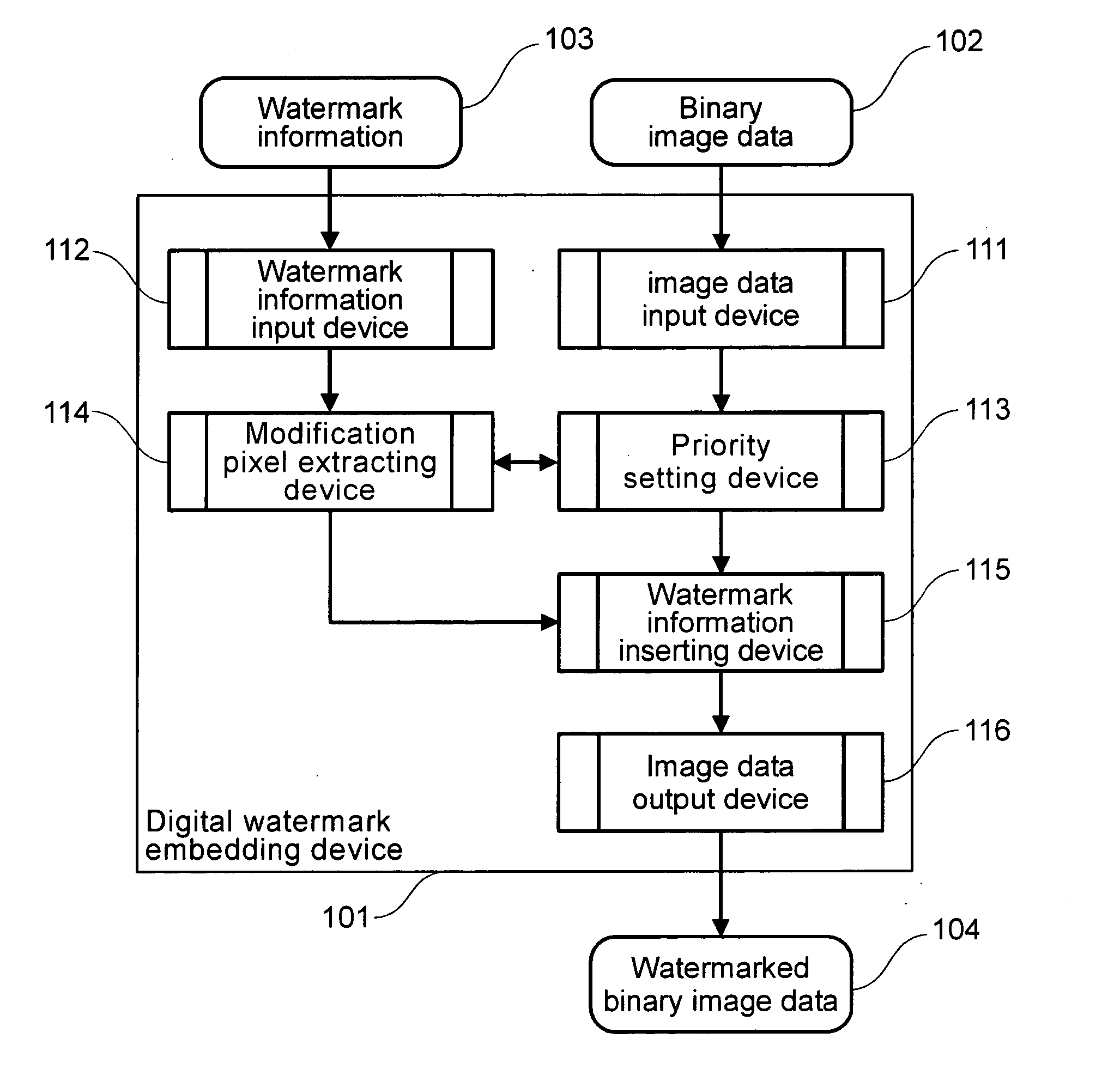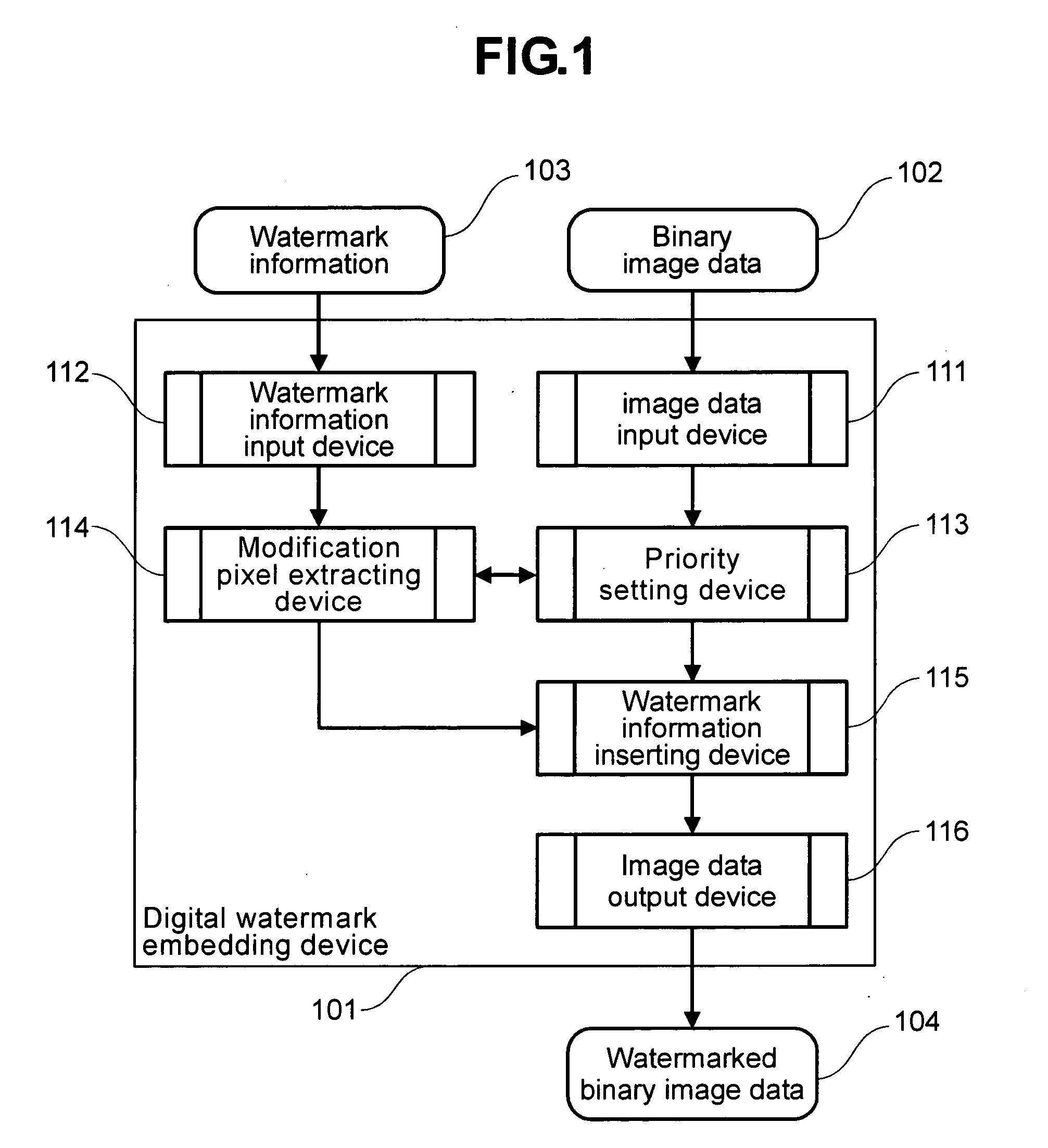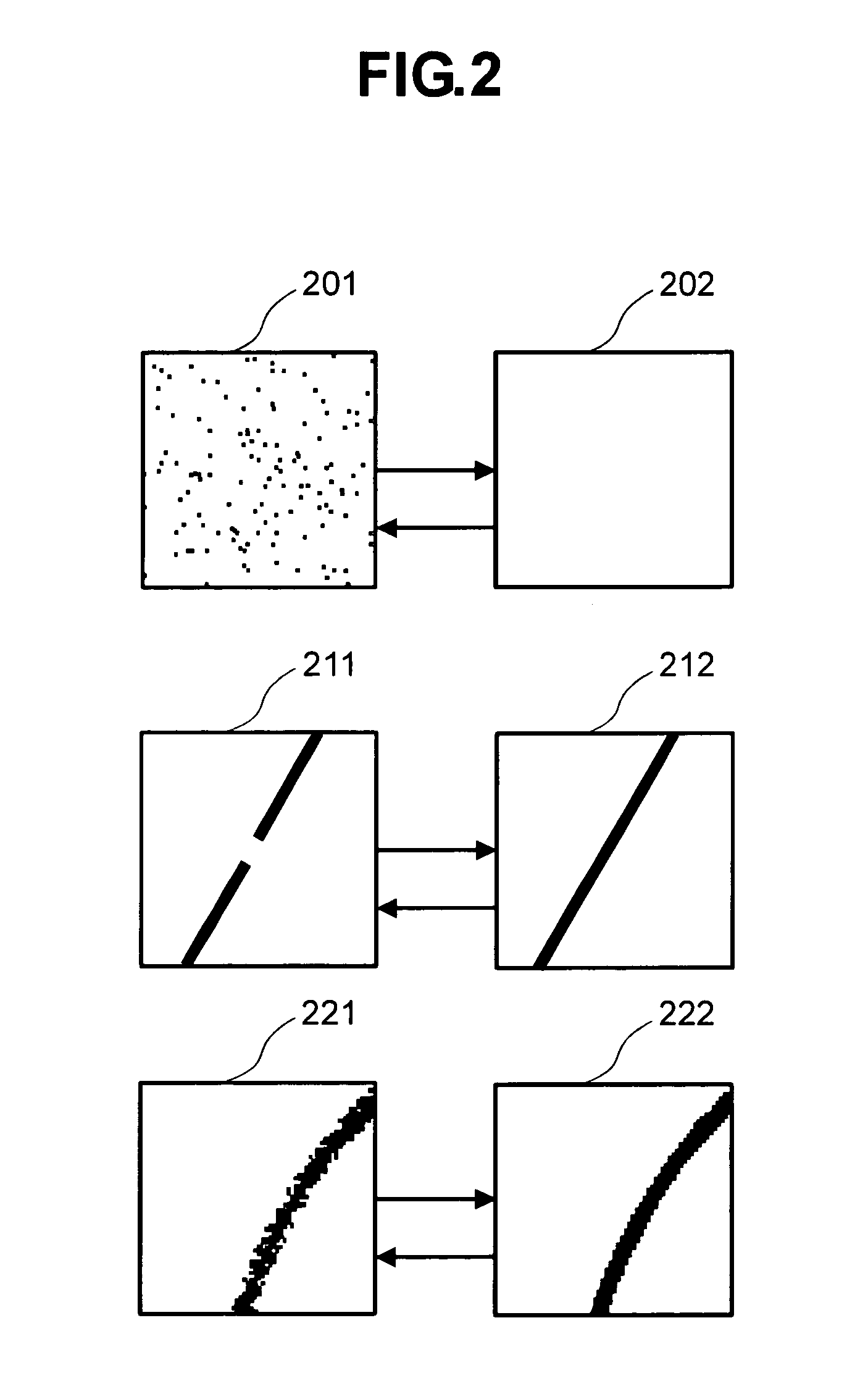Method of watermarking for binary images
a technology of binary images and watermarks, applied in image data processing, instruments, printing, etc., can solve the problems of not meeting the first requirement, changing the layout of images, and not meeting the second requirement, so as to eliminate the possibility of image quality deterioration, no adverse effect on image quality, and flexible adjustment
- Summary
- Abstract
- Description
- Claims
- Application Information
AI Technical Summary
Benefits of technology
Problems solved by technology
Method used
Image
Examples
Embodiment Construction
The embodiments of the present invention will be described in the following four sections. (A) Outline of the device for embedding watermarks. (B) How to efficiently establish the order of preference for modifiable pixels by using the crossing number which is a quantity representing the local characteristics of binary images. (C) How to extract modifiable pixels. (D) Application of the embodiment.
(A) Outline of the device for embedding watermarks.
FIG. 1 shows the outline of the device 101 for embedding watermarks. The device may be realized in the form of computer hardware or software.
The image data input device 111 reads the binary image data 102. At the same time, the watermark information input device 112 reads the watermark information 103.
Then, the watermark embedding device 101 sends the binary image data 102 to the priority setting device 113. The priority setting device 113 scans the binary image data 102 and sets up the order of preference for the modification o...
PUM
 Login to View More
Login to View More Abstract
Description
Claims
Application Information
 Login to View More
Login to View More - R&D
- Intellectual Property
- Life Sciences
- Materials
- Tech Scout
- Unparalleled Data Quality
- Higher Quality Content
- 60% Fewer Hallucinations
Browse by: Latest US Patents, China's latest patents, Technical Efficacy Thesaurus, Application Domain, Technology Topic, Popular Technical Reports.
© 2025 PatSnap. All rights reserved.Legal|Privacy policy|Modern Slavery Act Transparency Statement|Sitemap|About US| Contact US: help@patsnap.com



